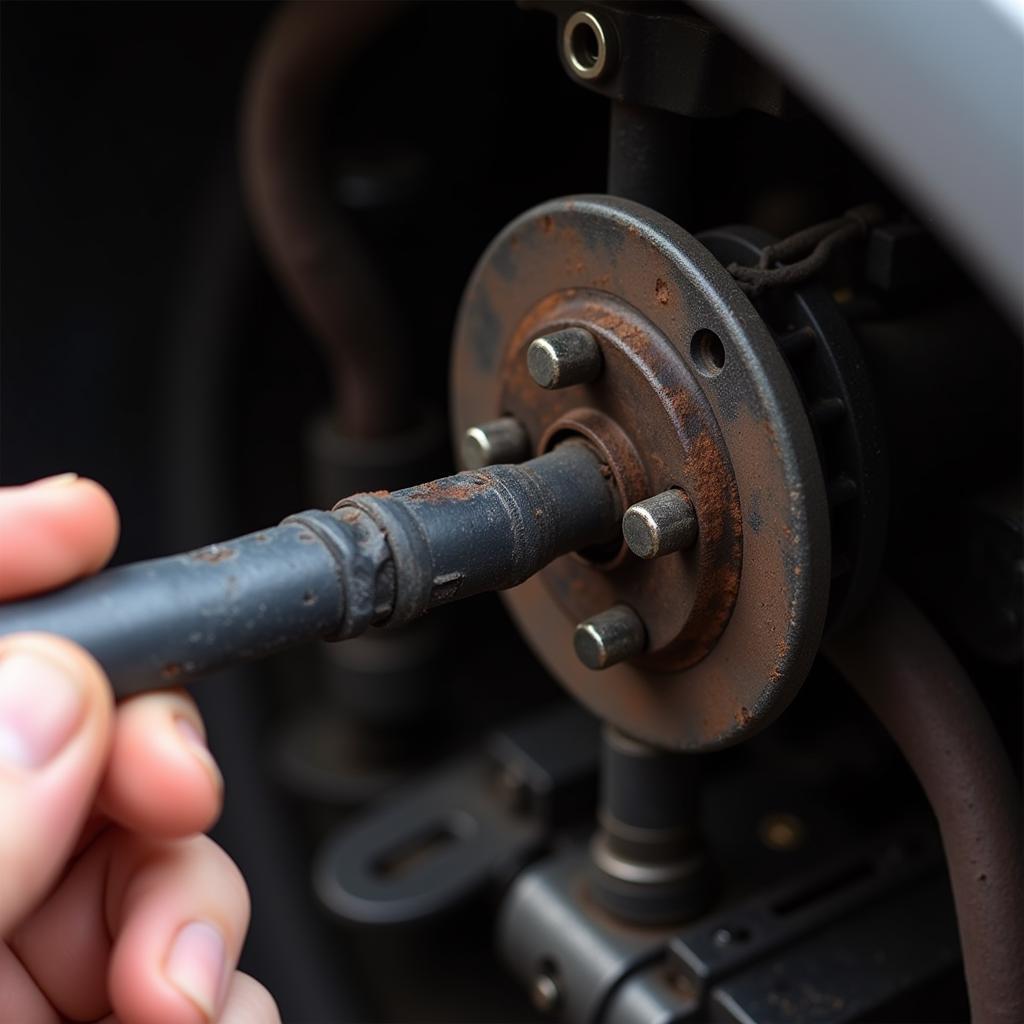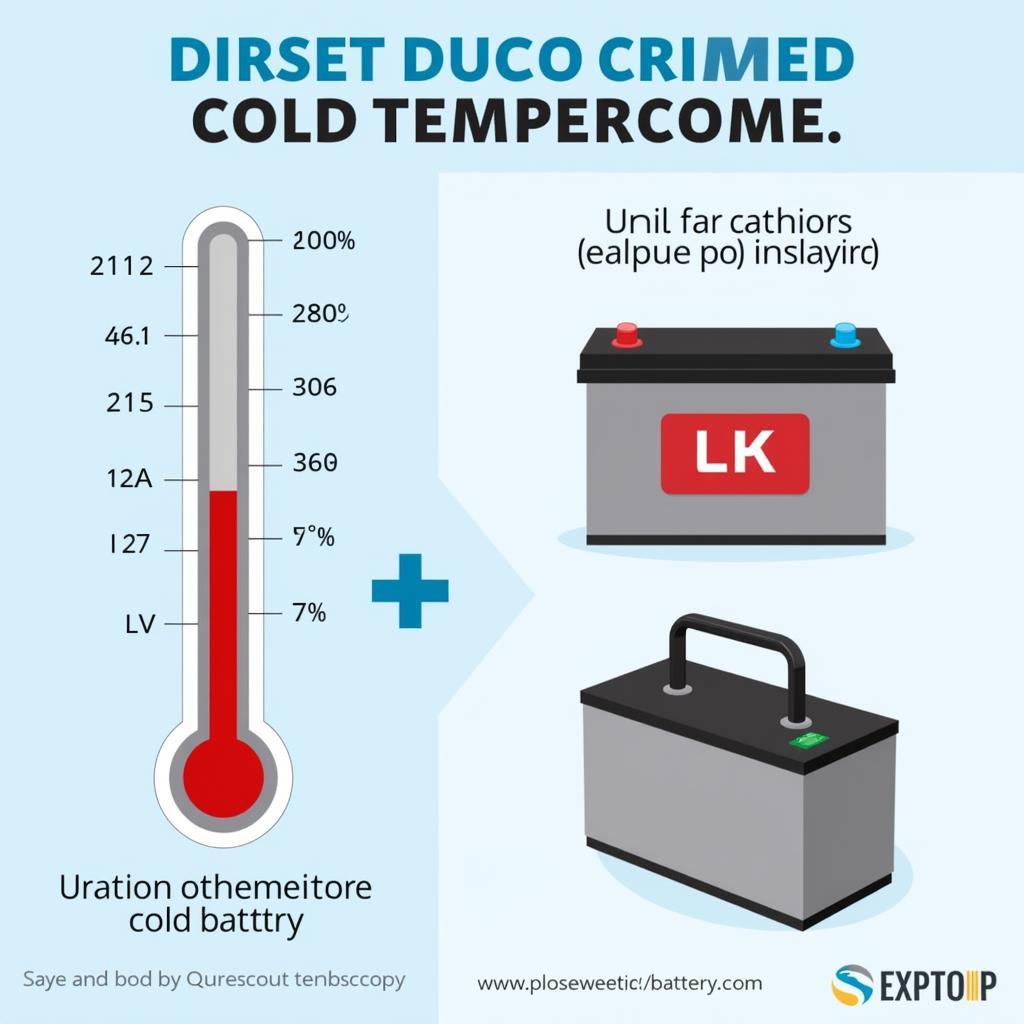A dead car battery can be a frustrating experience, but with a Noco jump starter, you can get back on the road quickly and easily. This guide covers everything you need to know about using a Noco jump starter for dead batteries, from basic operation to advanced troubleshooting, and even remote diagnostics.
Understanding Noco Jump Starters and Dead Batteries
Noco jump starters are portable power packs designed to revive dead car batteries. They deliver a powerful jolt of energy, enough to crank your engine and get it started. But understanding why your battery died in the first place is crucial. Several factors can lead to a dead battery, including leaving lights on, extreme temperatures, and old age. Knowing the root cause can prevent future occurrences.
Common Causes of Dead Car Batteries
- Parasitic Drain: Even when your car is off, certain systems continue to draw power, like the clock or radio memory. Over time, this can drain your battery, especially if it’s already weak.
- Extreme Temperatures: Both hot and cold weather can negatively affect battery performance. Heat can evaporate battery fluid, while cold can slow down the chemical reactions needed to produce power.
- Old Age: Batteries have a limited lifespan, typically 3-5 years. As they age, their ability to hold a charge diminishes.
- Corroded Terminals: Corrosion on the battery terminals can disrupt the flow of electricity, preventing the battery from charging and discharging properly.
How to Use a Noco Jump Starter on Dead Batteries
Using a Noco jump starter is straightforward, but following the correct procedure is vital to avoid damage to your car’s electrical system.
- Safety First: Ensure the ignition is off and all accessories are turned off. Wear safety glasses and gloves for added protection.
- Connect the Clamps: Connect the red clamp to the positive (+) terminal of your dead battery and the black clamp to the negative (-) terminal.
- Power On: Turn on the Noco jump starter.
- Start the Engine: Try starting your vehicle. If it doesn’t start immediately, wait a few minutes and try again.
- Disconnect the Clamps: Once the engine is running, disconnect the clamps in the reverse order – black clamp first, then red.
Troubleshooting Noco Jump Starter Issues
Sometimes, even with a Noco jump starter, your car might not start. Here’s what to do:
- Check the Connections: Ensure the clamps are securely attached to the battery terminals. Clean any corrosion from the terminals for a better connection.
- Charge the Jump Starter: If the jump starter’s charge is low, it might not have enough power to start your car. Recharge it fully before attempting another jump.
- Check the Battery: A completely dead or severely damaged battery might not accept a charge from a jump starter. You may need a new battery.
Advanced Diagnostics and Remote Software Solutions for Dead Batteries
Beyond jump-starting, advanced diagnostic tools and remote software solutions can play a crucial role in identifying and resolving persistent battery issues. These tools can pinpoint underlying electrical problems that might be contributing to recurrent battery drain.
- Remote Diagnostic Scanning: Specialized software can access vehicle data remotely to analyze battery health, charging system performance, and identify parasitic drains. This allows technicians to diagnose problems without physically accessing the vehicle.
- Software Updates & Programming: In some cases, battery-related issues can be resolved through software updates or reprogramming of the vehicle’s control modules. Remote software installation makes this process efficient and convenient.
“Remote diagnostics are transforming the automotive service industry,” says John Miller, Senior Automotive Electrical Engineer at AutoTech Solutions. “We can now pinpoint and address complex electrical problems faster and more effectively than ever before.”
Preventing Future Dead Battery Situations
Taking proactive steps can significantly reduce the risk of experiencing another dead battery.
- Regular Battery Testing: Test your battery voltage regularly using a multimeter or have it checked at an auto parts store.
- Proper Maintenance: Keep the battery terminals clean and free of corrosion. Apply a protective coating to prevent corrosion buildup.
- Limit Short Trips: Short trips prevent the battery from fully recharging. If you primarily drive short distances, consider using a battery maintainer.
“Preventive maintenance is key to avoiding dead battery headaches,” advises Sarah Lee, Lead Automotive Technician at CarCare Experts. “Regular checks and simple cleaning can significantly extend your battery’s lifespan.”
Conclusion
Dealing with a noco start dead batteries situation can be stressful, but understanding the causes and solutions can empower you to handle it effectively. Using a Noco jump starter correctly, performing basic troubleshooting, and adopting preventative measures can help keep your car running smoothly. For more complex issues, leveraging advanced diagnostic tools and remote software solutions can provide accurate and efficient solutions.
FAQ
- How often should I charge my Noco jump starter? It’s recommended to charge it every 3-6 months, even if it hasn’t been used.
- Can I use a Noco jump starter on any type of vehicle? Noco offers different jump starters for various engine sizes. Choose the appropriate model for your vehicle.
- What should I do if my car battery keeps dying? Have your battery and charging system professionally inspected to identify the underlying cause.
- How long does a car battery typically last? Most car batteries last 3-5 years, but various factors can influence their lifespan.
- Is it safe to leave a Noco jump starter connected to a dead battery overnight? No, it’s not recommended. Disconnect the jump starter once the engine is running.
- Can I use a Noco jump starter to charge other devices? Many Noco jump starters have USB ports for charging phones and other devices.
- What are the signs of a dying car battery? Slow engine cranking, dimming headlights, and clicking sounds when turning the key are common signs.


